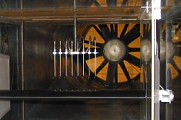

In this post we look more closely at the shape of the wing airfoil: why this differs from aircraft to aircraft, and how a careful airfoil selection will help to produce the flying characteristics you desire for your airplane.Īfter reading the post on wing area and aspect ratio, you should appreciate that there exists a very clear relationship between the size (weight) of the aircraft and the size of the wing (wing area) required to operate the aircraft as intended. Specifically we looked at wing area and aspect ratio. In a previous post we looked at the importance of the shape and plan-form of the wing, and how this has a great impact on the flying characteristics of the aircraft. Problems associated with lateral-control devices, leading-edge air intakes, and interference are briefly discussed, together with aerodynamic problems of application.This is part 5 in a series of fundamental aircraft design articles that aims to give you an introduction to aircraft design principles. Available data on high-lift devices are presented. The report includes an analysis of the lift, drag, pitching-moment, and critical-speed characteristics of the airfoils, together with a discussion of the effects of surface conditions.

Detail data necessary for the application of the airfoils to wing design are presented in supplementary figures placed at the end of the paper. The general methods used to derive the basic thickness forms for NACA 6 and 7-series airfoils together with their corresponding pressure distributions are presented.

New data are presented that permit the rapid calculation of the approximate pressure distributions for the older NACA four-digit and five-digit airfoils by the same methods used for the NACA 6-series airfoils. Summary of Airfoil Data The historical development of NACA airfoils is briefly reviewed.


 0 kommentar(er)
0 kommentar(er)
